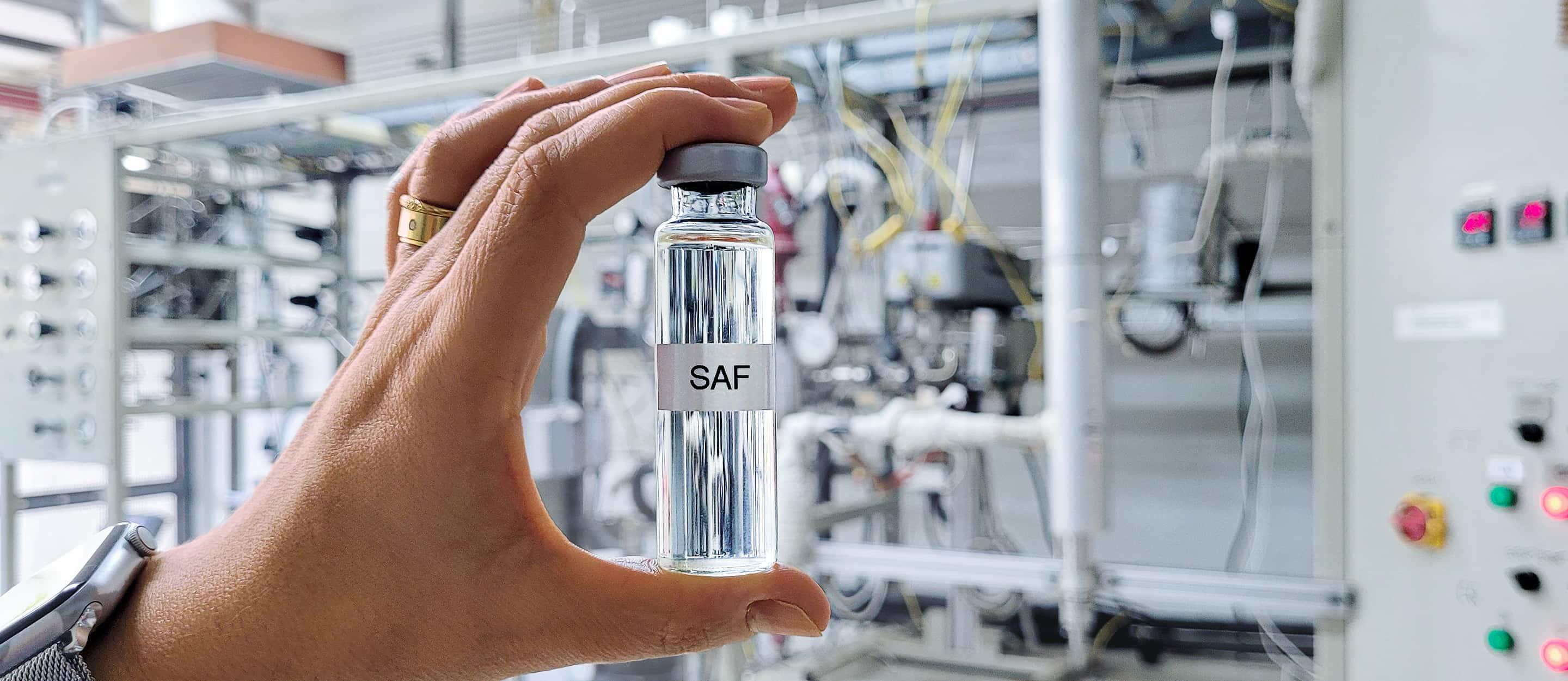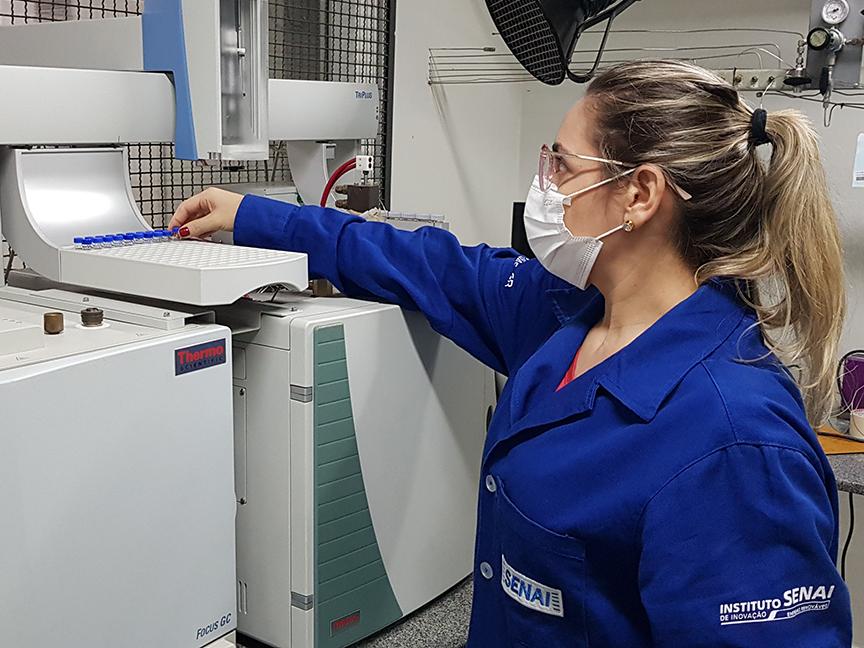Sustainable aviation fuels (SAFs) are the key to achieving the goal of reducing total greenhouse gas emissions in aviation to zero by 2050 (net zero emissions). But if demand is to be met, it will require a massive increase in production. The International Air Transport Association (IATA) estimates that 90 billion litres of SAF will be needed by 2035.
 Renata Moura/GIZ Brasil
Renata Moura/GIZ Brasil
‘The demand for sustainable aviation fuels is huge’
Demand for sustainable aviation fuels (SAFs) is growing rapidly. In this interview, Fabíola Correia de Carvalho from the SENAI Innovation Institute for Renewable Energies in Natal explains how research has joined forces with GIZ in Brazil to tackle this key issue for the future.
How can green hydrogen contribute to making air transport climate-friendly?
The search for clean sources of energy has intensified worldwide – including in the aviation industry. Until now, aviation has largely used conventional oil-based kerosene, which is responsible for large volumes of climate-damaging carbon dioxide emissions. This can now be avoided thanks to new, advanced fuels. These SAFs are produced using green hydrogen and renewable raw materials such as glycerine. This is a by-product from the production of biodiesel. For reasons of climate protection, fossil fuels will soon no longer be acceptable.
How high is the demand for these sustainable fuels in aviation?
The demand for SAFs and their marketing potential is enormous. IATA, the umbrella organisation for the world’s airlines, estimates that global demand will rise to five billion litres in 2025. That would be around one per cent of estimated consumption for 2024. Air transport in Brazil is already authorised to use a 50 per cent mix of SAF and fossil fuels.

Fabíola Correia de Carvalho, with a PhD in chemistry, conducts research at the SENAI Innovation Institute for Renewable Energies (ISI-SENAI) in Natal in northeast Brazil.
‘For reasons of climate protection, fossil fuels will soon no longer be acceptable.’
What makes your research into synthetic kerosene unique?
We have the first pilot plant in Brazil geared to the production of sustainable aviation fuels. Thanks to this infrastructure, we’re able to produce green hydrogen to obtain synthetic fuels. We’re currently working on a project which uses CO2 captured from the air and green hydrogen to produce SAF. Our location is a major advantage. My home state, Rio Grande do Norte, already gets more than 90 per cent of its energy from renewable sources. We’re also conducting research into different raw materials – including ethanol and biogas – and looking in each case at their potential for fuel production.
How has GIZ supported your research?
Unsere Our pilot plant was developed in cooperation with the H2Brasil project. Our laboratory for SAFs was opened in September 2023. This collaboration is a huge asset to us. It has enabled us to expand our research considerably.